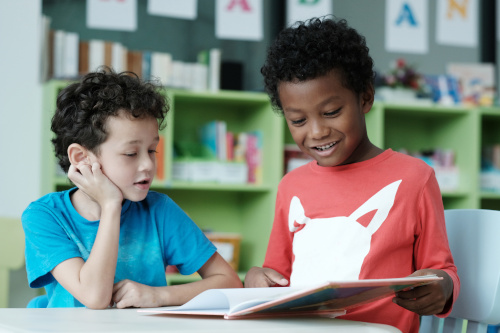Until very recently, learning loss was a matter of concern mainly because of long summer holidays. Students’ socioeconomic situations played a role in those concerns but, mostly, making up for the knowledge and skills lost over school breaks involved returning learners to their school routines.
And, of course, revising the last few weeks of last semester’s curriculum before moving on to new material.
The coronavirus pandemic has redefined what learning loss means. Generally speaking, nobody was prepared for the sudden and dramatic upending of life as they knew it. Some adapted quickly, while others struggle with the mental and physical impacts of COVID to this day.
Education systems around the world, long holding to traditional teaching templates, found they had neither the equipment nor the training to fall into remote teaching schemes. For most schools, there were no plans for such a contingency.
For all the suddenness and severity of the situation, schools, teachers, and students met the challenge head-on, adapting as best they could.
But this infernal virus is not yet done with us. Not only do we have to overcome the learning loss this crisis caused, but we must also contend with possible future instances of missed lessons and school closures.
Here are seven ways to counter student learning loss.
1. Frame the issue appropriately. Educators know that they have to make up for lost time; those days and weeks spent out of the classroom knocked entire syllabi off course. The trouble is, teachers can’t just teach most of the course and hope their students learn enough to come out fine in future classes. Catch-up work is necessary but calling it that puts undue pressure on the students. Indeed, it may cause them to feel as though they’ve been laggards rather than afflicted by the same catastrophe that teachers labored under. Revision would be a suitable alternative, or recapping past lessons.
2. Avoid any mention of remediation. That word implies there is something deficient with the students themselves, rather than they, too, being caught up in extraordinary circumstances.
3. Go easy on assessments. Teachers have to know where their students are, academically; testing is one of the easiest ways to determine that. However, exams and pop quizzes tend to provoke student anxiety even in the best of times; adding to their stress as they adjust to school would be counterproductive. Rather than paper tests, teachers may gauge the depth of learning loss their students have incurred through discussion or project work students can do independently.
4. Put more emphasis on ‘thriving.’ As educators well know, school is not only about learning. Social, emotional, and psychological factors are also important components of the school experience, particularly for older students. Thus, focusing exclusively on academics neglects three-quarters of students’ development. Pre-COVID, educators had the luxury of letting these factors balance themselves but now, they must actively consider their part in fostering a thriving environment. Such may be a discussion or debate, or allowing extra time at the start or end of class for kids to just be kids. Surveys could also be used to gauge students’ overall wellness and readiness for learning.
5. Focus on the gains. It’s important to recognize the tremendous ordeal teachers and students have, to some extent, endured together. However, it’s just as vital to realize how much all parties concerned have gained from the experience. Teachers can show their appreciation for their students’ efforts to remain present and active during online lessons; they may even thank individual students for contributions made during that time. Teachers may encourage further use of the self-directed learning techniques students adopted to complement remote instruction.
6. Develop a peer-mentoring scheme. After being so long disconnected from their classmates, it would be a good idea for teachers to help students create more overt bonds with their peers. Teachers may help form those ties by pairing students up as study buddies, such that more adept students mentor those who are less assured and/or less advanced than they are. Not only would such a program help students rediscover a sense of connection, but it would give them a sense of purpose. Peer mentoring, or peer-to-peer schemes, work very well in classes where group work takes precedence over whole-class lessons.
7. Be flexible. Granted, teachers don’t have a lot of room to maneuver within the curriculum, but they should adjust their pedagogy to adapt to the given moment. For instance, during a group-work assignment, teachers may talk with students one-to-one instead of circulating around the room or completing administrative tasks. Or, instead of purely teacher-led instruction, they may alternate between student-led and teacher-led initiatives. Getting student feedback (through the aforementioned surveys, for example) can show teachers where and when they could be more flexible. Acting on those suggestions gives students more buy-in to their education.
From an administrative standpoint, student learning loss revolves around assessment results. However, teachers know that education is so much more than assessment outcomes. Social and emotional learning (SEL) cannot be measured by any standardized exam, but SEL skills are vital to students’ future success and, indeed, the health of society as a whole.
For teachers, student learning loss isn’t so much about discovering how much ground was lost due to remote learning and pandemic conditions and making it up. It’s finding the best ways forward from where their students are currently at.
- 3 ways to avoid summer learning loss - April 19, 2024
- High school students say AI will change the workforce - April 18, 2024
- Motivating students using the Self-Determination Theory - April 17, 2024


